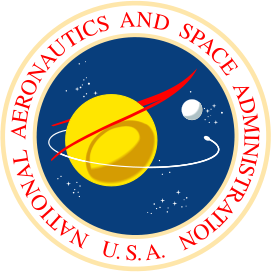And these are the 20 future missions of NASA in view of the cut in its budget for 2011 from the administration.

2) The Carbon Observatory-2 satellite mission. Will be launched in 2013. It will measure the levels of carbon dioxide in the Earth's atmosphere, which has increased by 38% since the industrial age. It is important in view of the large number of industries in our country.
3) The GRACE experiment (The Gravity Recovery and Climate Experiment). A satellite that went on a five-year mission and will map the changes in the Earth's gravitational field.
4) Glory satellite. A low-orbit research satellite designed to collect data on aerosols. Again designed to address the climate problem and the pollution we produce.
5) Aquarius satellite, whose launch has already been delayed by 12 months. Now NASA wants to send it. It is designed to measure the level of salinity in the oceans on Earth.
6) A satellite named: National Polar-Orbiting Operational Environmental Satellite or, NPOESS. The satellite will collect data from the land, the oceans and the atmosphere and examine the global meteorological and climatic changes.
7) In 2012, NASA plans to launch a very successful system, which it has been operating since 1972, called Landsat. It is a system that applies to geology, forestry, agriculture, mapping, global change research and also for emergency responses. The system works by scanning changes in the ground.
8) A satellite that provides a global measurement of soil moisture and the state of melting and glaciers in the ground. Such processes help to understand processes related to water, energy and the carbon cycle.
9) The Ice, Cloud and land Elevation Satellite. or ICESAT-2. The satellite is designed to measure the mass of the ice layers on Earth, the levels of clouds and aerosols, the topography of the land and the vegetation.
10) The MAVEN mission will examine the Martian atmosphere closely and provide information on the history of the planet: why Mars once had a denser atmosphere, which supported the presence of liquid water on the ground. Maven will provide clues about the Martian atmosphere today and thus we can learn about the history of the planet. It will be launched in 2013.
11) Twins called Gravity Recovery and Interior Laboratory or GRAIL. Their purpose is to determine the internal composition of the moon and the thermal evolution of the moon. These are two spacecraft that will cruise in coordinated orbits around the moon for several months to measure its gravitational field in great detail.
12) A tiny lunar spacecraft called the Lunar Atmosphere and Dust Environment Explorer or LADEE will also be launched to the moon around 2013. Its purpose is to study the lunar atmosphere. It will connect to two probes as nodes in a lunar network currently under development called the International Lunar Network (ILN) and they will all create 8 to 10 geophysical stations.
13) A mission to be launched in 2011 to closely examine Tzedek in the name Juno. The Juno spacecraft will be placed in a highly elliptical and polar orbit around Jupiter, in order to study its formation, development and structure.
14) A telescope named James Webb Space Telescope or JWST Will be launched towards 2014. This is the most sensitive infrared telescope ever built. It is designed to observe the most distant galaxies in the universe and the light from the first stars.
15) Two satellites planned to be launched in 2012. Their task will be to examine how the accumulation of radiation from space is created and how it changes during space storms.
16) A vehicle that circles the sun. European Space Agency space mission, but the space vehicle partially uses NASA technology. It will rotate according to the direction of the sun's rotation, this is so that the spacecraft can closely examine the development of sunspots, active areas in the sun and characteristics and phenomena in the sun.
17) Another satellite called Nuclear Spectroscopic Telescope Array or NuSTAR planned for launch in 2012 will allow astrophysicists to study the universe in high-energy x-rays.
18) Space vehicle MESSENGER (RT The MErcury Surface, Space ENvironment, GEochemistry, and Ranging) will enter orbit around the planet Mercury in 2011. For the first time, the closest planet to the Sun will be explored in depth by a spacecraft that will orbit it 730 times.
19) Another spacecraft designed to observe the sun will be launched this month specifically to study sunspots.
20) Satellite The new horizons Launched in 2006 towards Pluto. It will reach Pluto in 2015. It will transmit images from a distance of about 10,000 km from the surface of Pluto and about 27,000 km from Charon.

7 תגובות
Yesterday the probe arrived at Pluto, it took 10 years - a long time.
So many satellites in space, it might even hide the sun.
Regarding section 12. Since when does the moon have an atmosphere?
There is no cut in NASA's budget, there is an addition of about half a billion dollars for next year, see their website http://www.nasa.gov/news/budget/index.html
Joseph. Thanks. fixed
Mistakes?
Section 17: "will allow astronauts to explore the universe with x-rays at high energies."
Does it mean "astrophysicists"?
Section 20: "It will transmit images at a distance of 60 meters from the planet".
There is no doubt that "Metrim" is not suitable. What is the correct distance? kilometers?
Why not consolidate the missions around the earth into one satellite?